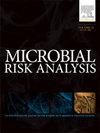Prevalence and concentrations of four waste-pathogen combinations from land-spreading across high-income, temperate regions: Meta-modelling and distribution fitting for quantitative microbial risk assessment (QMRA)
IF 4
4区 环境科学与生态学
Q2 ENVIRONMENTAL SCIENCES
引用次数: 0
Abstract
Land-spread organic wastes provide sustainable waste management across high-income, temperate regions. However, enteric pathogens in these animal manures and wastewater treatment sludges (WWTS) may pose food- and waterborne public health risks. Furthermore, these risks might increase due to climate change, with the likelihood of increasing temperature and precipitation across temperate latitudes. Quantitative microbial risk assessment (QMRA) is an established approach to estimate the potential risks, with a sparsity of spatiotemporally distributed waste-pathogen combination (W-PC) prevalence and concentrations from land-spreading existing in the literature for QMRA. Additionally, a knowledge gap exists regarding the availability of meta-models to predict pathogen prevalence based on spatially specific climatic or agricultural parameters. Accordingly, spatiotemporally representative data across high-income, temperate regions were extracted from 46 published studies based on a scoping review of four W-PC (i.e., bovine slurry-STEC serogroups O157/O26, bovine slurry-Cryptosporidium parvum, broiler litter-Campylobacter jejuni, and WWTS-norovirus genogroups GI/GII) prevalence and concentrations from land-spreading. Meta-analyses and distribution fitting of these data characterised variability and uncertainty, with generalised linear mixed effects models employed to develop prevalence meta-models in addition to generalised additive models for location, shape, and scale fitted to concentrations. Mean pathogen prevalence ranged from STEC O157/O26 7 % OR 1.07 p = 0.05 to C. jejuni 39 % OR 1.48 p < 0.0001, with bioclimatic indicators, namely temperature and precipitation seasonality, significant across all meta-models. The best fit was a 2-parameter reverse Gumbel for norovirus GI/GII log10 gc ml-1 concentration (µ = 0.33, p = 0.55; σ = 0.66, p = 0.004; GAIC = 69.21). While meta-analyses and distribution fitting accounted for uncertainty and variability associated with modelled data, more standardised secondary data are required from primary research to provide more accurate QMRA estimates for ensuring microbiological safety in primary agricultural production.

四种来自高收入温带地区土地传播的废物病原体组合的流行率和浓度:定量微生物风险评估(QMRA)的元模型和分布拟合
陆地上散布的有机废物为高收入温带地区提供了可持续的废物管理。然而,这些动物粪便和废水处理污泥(WWTS)中的肠道病原体可能构成食物和水传播的公共卫生风险。此外,由于气候变化,这些风险可能会增加,温带地区的温度和降水可能会增加。定量微生物风险评估(QMRA)是一种评估潜在风险的成熟方法,但文献中存在时空分布的废物-病原体组合(W-PC)流行率和浓度的稀疏性。此外,在基于空间特定气候或农业参数预测病原体流行的元模型的可用性方面存在知识缺口。因此,基于对四种W-PC(即牛浆液-产大肠杆菌血清群O157/O26、牛浆液-小隐孢子虫、肉鸡窝-空肠弯曲杆菌和wwts -诺如病毒基因群GI/GII)在陆地传播的流行和浓度的范围审查,从高收入、温带地区的46项已发表研究中提取了具有时空代表性的数据。这些数据的荟萃分析和分布拟合具有可变性和不确定性的特征,除了用于拟合浓度的位置、形状和规模的广义相加模型外,还使用广义线性混合效应模型来开发患病率元模型。平均致病菌患病率从STEC O157/O26 7% OR 1.07 p = 0.05到空肠C. jejuni 39% OR 1.48 p <;0.0001,生物气候指标,即温度和降水季节性,在所有元模型中都显著。诺如病毒GI/GII log10 gc ml-1浓度的最佳拟合为2参数反向Gumbel(µ= 0.33,p = 0.55;σ = 0.66, p = 0.004;gac = 69.21)。虽然荟萃分析和分布拟合解释了与建模数据相关的不确定性和可变性,但需要从初级研究中获得更多标准化的次级数据,以提供更准确的QMRA估计,以确保初级农业生产中的微生物安全。
本文章由计算机程序翻译,如有差异,请以英文原文为准。
求助全文
约1分钟内获得全文
求助全文
来源期刊

Microbial Risk Analysis
Medicine-Microbiology (medical)
CiteScore
5.70
自引率
7.10%
发文量
28
审稿时长
52 days
期刊介绍:
The journal Microbial Risk Analysis accepts articles dealing with the study of risk analysis applied to microbial hazards. Manuscripts should at least cover any of the components of risk assessment (risk characterization, exposure assessment, etc.), risk management and/or risk communication in any microbiology field (clinical, environmental, food, veterinary, etc.). This journal also accepts article dealing with predictive microbiology, quantitative microbial ecology, mathematical modeling, risk studies applied to microbial ecology, quantitative microbiology for epidemiological studies, statistical methods applied to microbiology, and laws and regulatory policies aimed at lessening the risk of microbial hazards. Work focusing on risk studies of viruses, parasites, microbial toxins, antimicrobial resistant organisms, genetically modified organisms (GMOs), and recombinant DNA products are also acceptable.
 求助内容:
求助内容: 应助结果提醒方式:
应助结果提醒方式:


